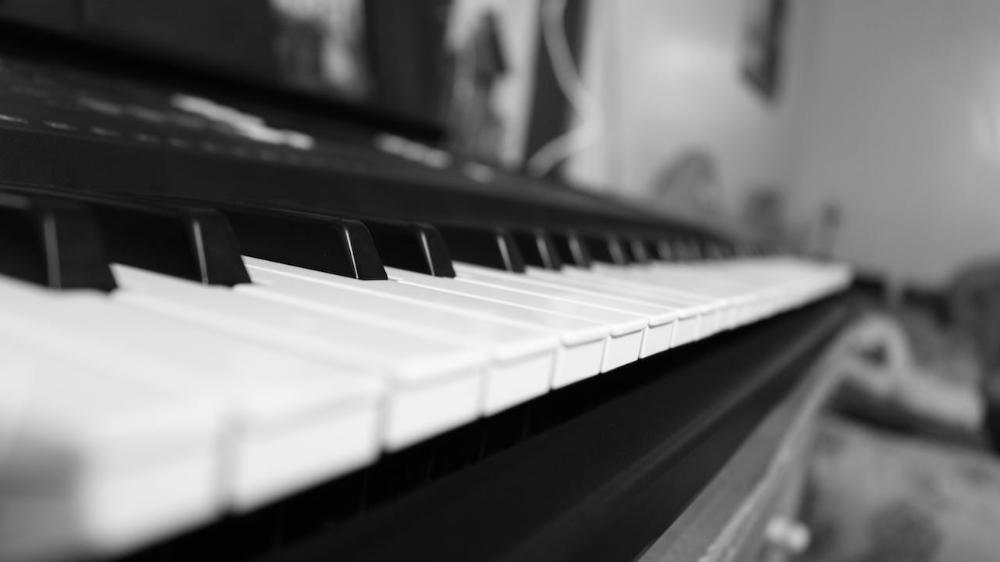Estimated reading time: 6 minutes
Have you ever listened to instrumental music and been captivated by a diverging sound that seems to glide smoothly from one note to another? If so, you’ve experienced the magic created by the technique known as pitch bend. A flicker of intrigue or a raised eyebrow – that’s the usual reaction when someone first hears about ‘pitch bend.’ This technique may sound complex, but it’s actually an interesting feature common in electronic music production, from synthesizers to MIDI controllers.
In this article, we’ll dive deep into pitch bend by exploring what it is, the role it plays in music, and how to use it effectively to enhance your musical compositions. Don’t worry if you’re new to the subject or a seasoned musician. We’ve got something for everyone, and we’ll break the concept down into digestible bites.
Table of contents
What is Pitch Bend?
Simply put, pitch bend is the ability to vary the pitch of a note, up or down, in a continuous manner. Unlike simple discrete shifts between notes, pitch bend creates a seamless gliding sound, producing a more vibrant and expressive music production. It’s what makes a guitar solo really wail, or what gives a keyboard synth part a little bit of extra flavor.
The technology behind pitch bend is typically integrated into MIDI controllers, synthesizers, or other digital music instruments. A pitch bend wheel or lever allows the musician to alter the pitch of a played note, usually up or down by two semitones (or a whole step). This creates the characteristic sweep or glide in the sound we associate with the term ‘pitch bend.’
The Role of Pitch Bend in Electronic Music
While pitch bend is used in various music genres, it is particularly prominent in electronic music. This is because synthesizers and MIDI controllers – tools commonly used in this genre – typically have built-in pitch bend controls. The use of pitch bending in electronic music can add a sense of movement and auditory interest. It helps create unique transitions between notes and can also mimic the natural variation in pitch found in acoustic instruments, adding a human touch to electronic synths.
Note: Remember, pitch bend shouldn’t be overused. Too much of it may lead to a cacophonous output.

Teaching your Fingers the Art of Pitch Bending
Now that we have decoded the term ‘pitch bend,’ let’s learn how to use it. The good news is that it’s incredibly accessible, and no, it doesn’t involve more key pressing expertise than you already possess. Here’s how to get started:
Begin with Pitch Bend Range
Before you go mad with your pitch bending skills, it’s important to define the pitch bend range on your synthesizer or MIDI controller. This sets the maximum distance, up or down, that your pitch can be bent using the pitch bend control.
The pitch bend range is usually expressed in semitones, which are the smallest intervals commonly used in Western music. Common pitch bend ranges are +-2 semitones (a whole step) or +-12 semitones (one octave), but you may set it to any value that serves your musical vision.
Execute with Precision
The key to perfect pitch bending lies in control and precision. When pitch bending during a performance, be mindful not to move the pitch bend wheel or lever too quickly or irregularly. This might give an uncontrolled, off-pitch sound. With some practice, you can learn to move the pitch bend control in a smooth and controlled manner, mimicking natural pitch variation or allowing for creative note transitions.
Experiment and Explore
One exciting part of music production is the freedom to experiment as you please. Don’t limit yourself to just bending pitches of notes. Try incorporating pitch bend into different parts of your melody or rhythm, and explore a variety of pitch bend ranges to see what fits your song best. There’s no right or wrong way to use pitch bend. The only limit is your creativity!
| Topic | Information |
|---|---|
| Article Title | Unraveling the Mystery of Pitch Bend in Music Production |
| Key Concept | Pitch bend allows continuous variation of a note’s pitch, adding expression and movement to music. |
| Usage in Genres | Prominent in electronic music but versatile; used in pop, rock, jazz, and classical genres. |
| Implementation Tools | Integrated into MIDI controllers, synthesizers, and digital instruments through pitch bend controls. |
| Pitch Bend Range | Must be defined on instruments; commonly set in semitones, influencing the extent of pitch modulation. |
| Importance of Control | Precision in pitch bending is crucial for avoiding unintended sounds; smooth, controlled motion is key. |
| Caution against Overuse | Overusing pitch bend can lead to cacophonous results; moderation is advised for a balanced musical output. |
| Encouragement to Experiment | Experimentation is encouraged; try different pitch bend ranges and incorporate it creatively in melodies. |
| Application in Music Production | Enhances compositions by mimicking natural pitch variations, adding a human touch, and creating unique transitions between notes. |
| Takeaway Message | Pitch bend is a creative tool; when used judiciously, it injects a unique character into musical compositions. |
Summing It Up
In conclusion, pitch bend is more than just a nifty feature in your MIDI controller or synthesizer. It’s a creative tool that, when used carefully, can help inject a unique character into your music compositions. Whether you’re aiming to imitate the slides of a guitar, mirror the wavering pitch of the human voice, or create unique electronic sounds, pitch bend can be your best friend. Just remember to use it wisely to avoid overdoing it.
The key takeaway here is not to be afraid of experimenting with pitch bend. If you’ve never used it before, give it a go and let your creativity soar. You might just discover a new dimension to your music making endeavors.
And the next time you hear that intriguing sound in your favorite song, you’ll be able to say with confidence, “Ah, that’s pitch bend!”
FAQ
Pitch bend is a technique that allows musicians to smoothly vary the pitch of a note, creating a seamless glide between tones. This is achieved through a pitch bend wheel or lever on instruments like synthesizers or MIDI controllers, enabling continuous pitch modulation for expressive and dynamic musical effects.
While pitch bend is prevalent in electronic music due to synthesizers and MIDI controllers, it’s not exclusive to the genre. This technique can enhance various music styles by adding movement and expression, creating unique transitions between notes, and mimicking natural pitch variations found in acoustic instruments.
Begin by defining the pitch bend range on your synthesizer or MIDI controller, setting the maximum pitch variation. Practice control and precision when using the pitch bend control, ensuring smooth and intentional modulation. Experiment with different pitch bend ranges to discover what complements your musical vision.
Yes, pitch bend should be used judiciously. Overusing it may lead to a cluttered or dissonant sound. Strive for moderation and consider the musical context when implementing pitch bend. Use it purposefully to enhance specific moments or elements in your composition without overshadowing the overall musical experience.
While pitch bend finds a natural home in electronic music, it is versatile and can be employed in various genres. It’s commonly used in pop, rock, jazz, and even classical music to add expressive nuances, creating a dynamic and engaging auditory experience across different musical landscapes.
